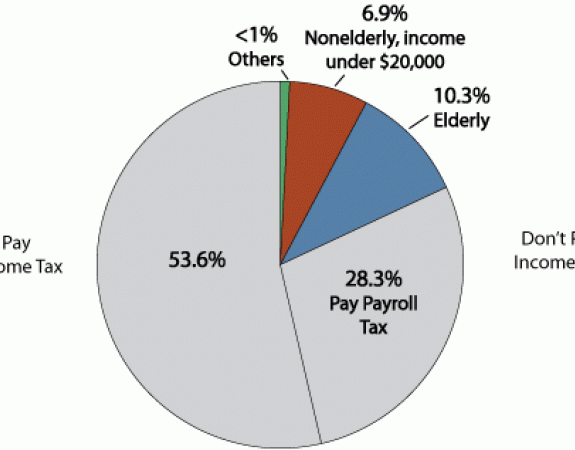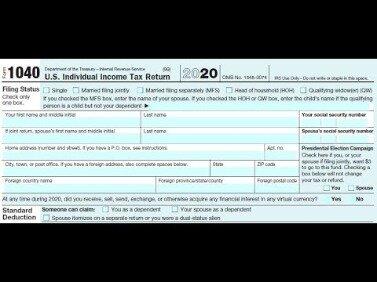Contents:


In short, the DSI inventory calculation is generally of supreme importance for business models in industries with fickle demand. In summation, die-bank inventory DSI grew 46 days YOY in the March 2005 quarter. At the same time, competitor Linear Technology only had die-bank inventory DSI of 53 days compared to Maxim Integrated’s appalling 130 days. DSI can be measure of the effectiveness of inventory management by a company. On the other side, a large DSI value is going to suggest that a company may be struggling with high-volume inventory, which is never a good thing.
- The leading retail corporation Walmart had inventory worth $56.5 billion and cost of goods sold worth $429 billion for the fiscal year 2022.
- DSI is calculated by taking the average annual inventory, dividing it by the cost of goods sold for the same period, and multiplying the result by 365.
- Using the formula for DSI, we see that it took Procter & Gamble an average of 56.67 days to convert its inventory into sales.
- Days sales in inventory is a financial ratio that measures the average amount of time, usually measured in days, it takes for a company to turn its inventory into sales.
Advanced Micro Devices , with a beginning inventory of $980 million and an ending inventory of $1.4 billion, had an average inventory of $1.19 billion. Dividing the average inventory of $1.19 billion by the total cost of goods sold of $5.42 billion and multiplying by 365, AMDs‘ DSI equals 80.23 days. Using the formula for DSI, we see that it took Procter & Gamble an average of 56.67 days to convert its inventory into sales. On its own, this number provides little value because we would need to compare this to similar companies in the same sector. Based on your retail category, you can calculate the different inventory metrics for your business, and then compare them with industry’s benchmarks to see how efficiently you are buying & managing your inventory. This result means that it takes 292 days to sell the average inventory of this company.
Cloud Inventory®
Similarly, quarter-over-quarter comparisons for a seasonal business would be misleading as well. If a business’s DII for the last fiscal year equaled seven days , that means inventory turnover would be 52, equal to the number of weeks in a year. Too much cash tied up in inventory can cause problems elsewhere, such as the inability to pay a supplier on time or invest in a new opportunity because all your money is tied up in inventory. DSI Cloud Inventory® provides real-time access and insight into inventory information, anywhere. The fewer days required for inventory to convert into sales, the more efficient the company is. Gain in-demand industry knowledge and hands-on practice that will help you stand out from the competition and become a world-class financial analyst.

They both begin the year with $1,000,000 of what is bookkeeping and end the year with $1,200,000 of inventory. Average inventory is the average value in dollars of inventory over a time period, and COGS is the cost of goods sold for that same time period. For an annual calculation, you’d take the year’s average inventory divided by COGS for that same year, then multiply the result by the number of days in that year. If the company is producing its own goods, inventory should include works in progress, too.
What is Days Sales in Inventory (DSI)?
Inventory turnover is an efficiency ratio that measures how many times a company sells and replaces its inventory, or goods in a given period. A higher inventory turnover ratio is preferred because it usually indicates strong sales. Conversely, a lower inventory turnover could mean that there is an excess inventory on hand. This is different from DSI because a lower DSI is preferred to a higher DSI. Inventory turnover can be calculated by dividing a companies‘ cost of goods sold by its average inventory. Managing inventory levels is vital for most businesses, and it is especially important for retail companies or those selling physical goods.
In general, the higher the inventory turnover ratio, the better it is for the company, as it indicates a greater generation of sales. A smaller inventory and the same amount of sales will also result in high inventory turnover. The inventory calculation for days sales in inventory divides the number of days in the time period by the inventory turnover in that period. Inventory turnover is a metric that works hand in hand with days in inventory.
In the above example, the beginning inventory for 2021 was $5.5 billion, and the ending inventory was $5.98 billion. Therefore, we divide the numerator by 2 to get an average inventory of $5.74 billion for the year 2021. Ending inventory is a common financial metric measuring the final value of goods still available for sale at the end of an accounting period. ShipBob helps ecommerce companies manage inventory so that they can meet the increasing consumer demand without slowing down. Here are some of the strategies ShipBob can help you implement to improve your DSI, as well as your overall inventory management.
- A high DSI may also indicate that a company’s products are becoming obsolete.
- A smaller inventory and the same amount of sales will also result in high inventory turnover.
- Fashion stores, on the other hand, tend to buy their inventory in seasons and trade them for the whole season.
- Inventory turnover may be used as a variable in the DSI calculation by dividing the number of days over which the COGS was measured by a company’s inventory turnover.
- Frequent inventory write-offs can indicate a company’s issues with selling its finished goods or inventory obsolescence.
- Therefore, we divide the numerator by 2 to get an average inventory of $5.74 billion for the year 2021.
It is also vital to compare DSI and other ratios to those of sector peers. Continuing our example with Procter & Gamble, the cost of goods sold for 2021 was $36.97 billion. First-in, first-out is a valuation method in which the assets produced or acquired first are sold, used, or disposed of first.
The financial ratio days’ sales in inventory tells you the number of days it took a company to turn its inventory, also known as inventory turnover. Keep in mind that a company’s inventory will change throughout the year, and its sales will fluctuate as well. To manufacture a salable product, a company needs raw material and other resources which form the inventory and come at a cost. Additionally, there is a cost linked to the manufacturing of the salable product using the inventory. Such costs include labor costs and payments towards utilities like electricity, which is represented by the cost of goods sold and is defined as the cost of acquiring or manufacturing the products that a company sells during a period. DSI is calculated based on the average value of the inventory and cost of goods sold during a given period or as of a particular date.
Days Sales In Inventory Calculation
Mathematically, the number of days in the corresponding period is calculated using 365 for a year and 90 for a quarter. Days Sales in Inventory can be calculated by dividing the average inventory by the cost of goods sold and then multiplying the result by 365 to get DSI for a year. It can also be calculated by dividing the inventory turnover ratio by 365.
However, similar to other financial ratios, it provides little value on its own and hence must be compared across similar companies in similar industries. To analyze inventory, financial professionals typically use various financial ratios to judge whether a company has any issues with producing and promptly selling its inventory. Financial ratios can also raise potential red flags about accounting fraud or obsolescence. Investors and analysts typically look at a company’s inventory ratios over time and make comparisons among peers within the same industry.

Days in inventory — also known as days sales in inventory , days in inventory outstanding and inventory days of supply — is a metric that describes how many days’ worth of sales a business keeps in inventory. A common misconception is that DII means how many days it takes to clear out inventory. This implies that if your DII is 40 days, then in 40 days you can expect to have sold everything in stock. That holds true if you only sell one type of product, but if you sell multiple products, DII measures the average turnover of inventory, in dollars. You might have some products that clear inventory multiple times in that 40-day span, and others that take much longer to sell.
Inventory plays an important role in the smooth functioning of a company’s business since it acts as a buffer between the production and completion of customers‘ orders. Investors can find data on inventory in public filings of a company on its investor relations website or through the Securities and Exchange Commission website. While there is not necessarily one perfect DSI, companies typically try to keep low days sales in inventory. A lower DSI indicates that inventory is selling more quickly, which is usually more profitable than the alternative.
Days sales in inventory formula
Whereas DII tells you how long it takes a business, on average, to sell its inventory, inventory turnover tells you how many times, on average, the business sold and replaced its inventory in a given period. Calculating a company’s days sales in inventory consists of first dividing its average inventory balance by COGS. It is also important to note that the average days sales in inventory differs from one industry to another.

A retail company, on the other hand, can sell its items rather quickly, and its DSI is typically under 50 days. Days Sales in Inventory measures how many days it takes to sell the company’s inventory. It is used together with other metrics like inventory turnover ratio and GMROI to track how efficiently a company manages its inventory. Inventory turnover and DSI are similar, but they do not measure the same thing. DSI measures the average number of days it takes to convert inventory to sales, whereas the inventory turnover ratio shows the number of times inventory is sold and then replaced in a specific time period.
When you include the cost of labor and utilities like electricity or water, this is represented by the cost of goods sold and is defined as the cost of acquiring or manufacturing the products that a company sells during a period. The second input is the cost of goods sold , which is the sum of the costs of each unit of goods sold. COGS only includes production costs, such as raw materials and labor, and excludes any costs after production, such as sales floor costs. Though simple, this metric is very versatile, and can help provide critical insights into customer demand for your products, when you should restock your inventory, and how your company’s sales compare to those of your competitors. Days in inventory is a metric that measures how many days it takes to sell your current or average level of inventory.
The days sales of inventory gives investors an idea of how long it takes a company to turn its inventory into sales. ShipBob can help lower your inventory days by offering better inventory management and inventory tracking capabilities, lowering fulfillment costs, and efficiently setting reorder points. This gives you the information you need to calculate and monitor DSI, as well as other critical metrics such as inventory turnover, COGS, and average inventory valuation. DII calculations matter more for companies that deal primarily or exclusively in physical goods, and especially so for those that sell perishable inventory. Comparing a company’s DSI relative to that of comparable companies can offer useful insights into the company’s inventory management. The warehouse in today’s digital environment isn’t confined by four walls.
Management of commercial supply chains by pharmaceutical companies – News-Medical.Net
Management of commercial supply chains by pharmaceutical companies.
Posted: Thu, 19 Jan 2023 08:00:00 GMT [source]
David Kindness is a Certified Public Accountant and an expert in the fields of financial accounting, corporate and individual tax planning and preparation, and investing and retirement planning. David has helped thousands of clients improve their accounting and financial systems, create budgets, and minimize their taxes. Adam Hayes, Ph.D., CFA, is a financial writer with 15+ years Wall Street experience as a derivatives trader.
Note that inventory turnover, like DII, is an average, meaning the number can mask how long it takes a business to sell every last individual item in inventory. If a company’s DSI is on the lower end, it is converting inventory into sales more quickly than its peers. Moreover, a low DSI indicates that purchases of inventory and the management of orders have been executed efficiently.
A great example of where inventory management analysis is mission critical, but the difference between raw materials, work-in-process, and finished goods might not be material, would be an apparel company like Nike or Under Armour. DSI is also referred to by average age of inventory, days inventory outstanding , days in inventory , days sales in inventory or days inventory and is interpreted in multiple ways. Based on the DSI calculations for AMD and Nvidia, AMD, in 2020, was more efficient at converting its inventory into sales; however, other things must be considered, such as product offerings and supply chain, to name a few. Ford , with a beginning inventory of $10.79B and an ending inventory of $10.81B, had an average inventory of $10.80B. Therefore, by dividing the average inventory of $10.80B by the total cost of goods sold of $114.43B, and multiplying by 365, Ford’s DSI equals 34.45 days.
Inventory is measured in dollars, not units, so it doesn’t necessarily mean every item in stock would be sold. A single number for a single time period may not mean much in isolation, but when DII is tracked over time, it may uncover changes and trends that, in turn, could provide signals about inventory management. For example, a slow and steady decline in DII may be a sign that a new sales strategy is working, while a sudden jump may indicate a problem. (Remember not to diagnose a red flag solely on DII.) DII can also be used to compare similar companies in the same industry during the same time period. If the company’s inventory balance in the current period is $12 million and the prior year’s balance is $8 million, the average inventory balance is $10 million. The days sales of inventory is a financial ratio that indicates the average time in days that a company takes to turn its inventory, including goods that are a work in progress, into sales.
Rachel is a Content Marketing Specialist at ShipBob, where she writes blog articles, eGuides, and other resources to help small business owners master their logistics. Brainyard delivers data-driven insights and expert advice to help businesses discover, interpret and act on emerging opportunities and trends. This website is using a security service to protect itself from online attacks. There are several actions that could trigger this block including submitting a certain word or phrase, a SQL command or malformed data.
Supplyframe Commodity IQ Reveals New Signs of Semiconductor and Electronic Components Price Stability and Improved Availability – Yahoo Finance
Supplyframe Commodity IQ Reveals New Signs of Semiconductor and Electronic Components Price Stability and Improved Availability.
Posted: Wed, 22 Feb 2023 08:00:00 GMT [source]
Generally, a small average of days sales, or low days sales in inventory, indicates that a business is efficient, both in terms of sales performance and inventory management. A low DSI reflects fast sales of inventory stocks and thus would minimize handling costs, as well as increase cash flow. DSI is the first part of the three-part cash conversion cycle , which represents the overall process of turning raw materials into realizable cash from sales. The other two stages aredays sales outstanding anddays payable outstanding . While the DSO ratio measures how long it takes a company to receive payment on accounts receivable, the DPO value measures how long it takes a company to pay off its accounts payable. Overall, the CCC value attempts to measure the average duration of time for which each net input dollar is tied up in the production and sales process before it gets converted into cash received through sales made to customers.
For example, a drought situation in a particular soft water region may mean that authorities will be forced to supply water from another area where water quality is hard. It may lead to a surge in demand for water purifiers after a certain period, which may benefit the companies if they hold onto inventories. However, this number should be looked upon cautiously as it often lacks context. DSI tends to vary greatly among industries depending on various factors like product type and business model. Therefore, it is important to compare the value among the same sector peer companies. Companies in the technology, automobile, and furniture sectors can afford to hold on to their inventories for long, but those in the business of perishable or fast-moving consumer goods cannot.
